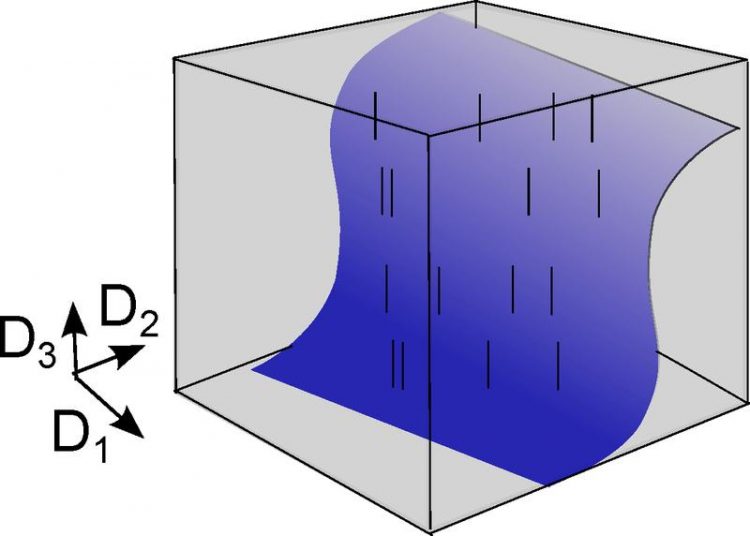How much information can we get from a spike?

In many situations it is sufficient to consider the space of pairwise spike correlations (blue) to understand neural information, without the need to evaluate all possible spike combinations (gray). Tatjana Tchumatchenko / Max Planck Institute for Brain Research
Recent work at the Max Planck Institute for Brain Research (Theory of Neural Dynamics Group) reveals that by determining temporal pairwise correlations one can get closer to answering this question.
A key to understanding how the brain works is revealing the set of rules neurons use to communicate information between one another. The main means of neural communication are spikes, which are brief electrical pulses send out at some specific times.
A spike train generated by a neuron can be considered a long binary pattern where “1” denotes a spike and “0” its absence. How much information about the input can be recovered by observing spike trains which look for example like 00010100…?
How many combinations of 0’s and 1’s should be studied to “decode” the input message of a neuron? Especially the latter question is not trivial because nearly infinitely many combinations of 0’s and 1’s are possible.
Tatjana Tchumatchenko and her team now present a theoretical approach showing that only a limited number of binary patters is required and that correlations between pairs of spikes (between the time points of two “1”s) are key to solve the code in single neurons.
Their findings have been published in Nature Communications.
http://brain.mpg.de/news-events/news/news/archive/2017/march/article/how-much-in…
Media Contact
All latest news from the category: Life Sciences and Chemistry
Articles and reports from the Life Sciences and chemistry area deal with applied and basic research into modern biology, chemistry and human medicine.
Valuable information can be found on a range of life sciences fields including bacteriology, biochemistry, bionics, bioinformatics, biophysics, biotechnology, genetics, geobotany, human biology, marine biology, microbiology, molecular biology, cellular biology, zoology, bioinorganic chemistry, microchemistry and environmental chemistry.
Newest articles

Trotting robots reveal emergence of animal gait transitions
A four-legged robot trained with machine learning by EPFL researchers has learned to avoid falls by spontaneously switching between walking, trotting, and pronking – a milestone for roboticists as well…

Innovation promises to prevent power pole-top fires
Engineers in Australia have found a new way to make power-pole insulators resistant to fire and electrical sparking, promising to prevent dangerous pole-top fires and reduce blackouts. Pole-top fires pose…

Possible alternative to antibiotics produced by bacteria
Antibacterial substance from staphylococci discovered with new mechanism of action against natural competitors. Many bacteria produce substances to gain an advantage over competitors in their highly competitive natural environment. Researchers…





















